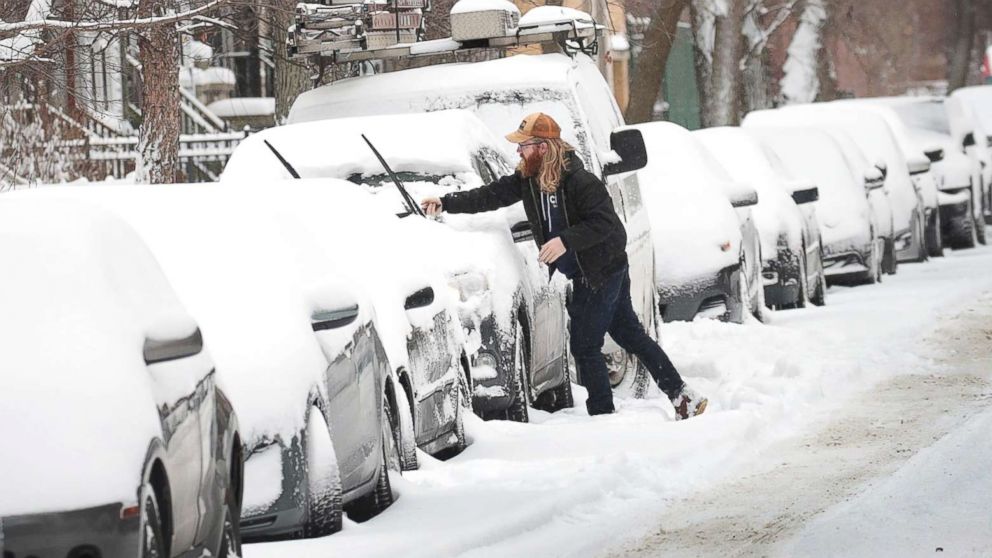
A major winter storm over the weekend delivered widespread snowfall, in many places 1 to 2 feet, from the Midwest to the Northeast.
And it’s already even colder.
In some areas, temperatures Monday morning are 30 to 40 degrees colder than just a day earlier — in Philadelphia, for example, it was 48 on Sunday morning and was about 12 degrees this morning — which has lead much of the fallen rain, sleet and snow to flash freeze into ice.
More than 90 million Americans will wake up to wind-chill alerts today. In parts of the Northeast, making matters worse, wind gusts could reach 50 mph, with wind chills falling as low as -30. Cities including Philadelphia and Boston may see -10 to -20. A wind chill of -30 can cause frost bite in about half an hour.
Wind chills are expected to remain dangerously cold all day, with sunlight bringing little relief.
A new storm is forecast to take shape over the Plains tonight and into Tuesday, heading east by Wednesday.
This new system is expected to spread a round of snow in the northern Plains and parts of the upper Midwest. Omaha, Sioux Falls and Minneapolis should see some powder, some of which probably will make it into Michigan and parts of the interior Northeast by Tuesday night and into Wednesday.
Along the cold front, heavy rain is likely across the south, with a chance for it to mix with snow in Tennessee and the Mississippi River Valley as temperatures drop.
Through midweek, local snowfalls of 4 to 6 inches are possible in parts of the Midwest, from Nebraska to Wisconsin. This storm is expected to take mild air to the Interstate 95 corridor and deliver another shot of heavy rain — locally an inch or more — from Washington to New York.
The passing of this storm sets the stage for another cold front behind it and another strong blast of cold air from Canada — the Midwest could see -40 wind chills by Friday.
More of this bitterly cold air will reach the East Coast by the weekend, once again drastically pushing down wind chills.





